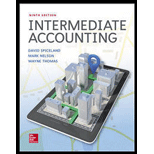
Concept explainers
Judgment Case 9–1
Inventoriable costs; lower of cost or market; retail inventory method
• LO9–1, LO9–3, LO9–4
Hudson Company, which is both a wholesaler and a retailer, purchases its inventories from various suppliers. Additional facts for Hudson’s wholesale operations are as follows:
a. Hudson incurs substantial warehousing costs.
b. Hudson values inventory at the lower of cost or market. Market is below cost of the inventories.
Additional facts for Hudson’s retail operations are as follows:
a. Hudson determines the estimated cost of its ending inventories held for sale at retail using the conventional retail inventory method, which approximates lower of average cost or market.
b. Hudson incurs substantial freight-in costs.
c. Hudson has net markups and net markdowns.
Required:
1. Theoretically, how should Hudson account for the warehousing costs related to its wholesale inventories? Why?
2.
a. In general, why is inventory valued at the lower of cost or market?
b. At which amount should Hudson’s wholesale inventories be reported in the
3. In the calculation of the cost-to-retail percentage used to determine the estimated cost of its ending retail inventories, how should Hudson treat
a. Freight-in costs?
b. Net markups?
c. Net markdowns?
4. Why does Hudson’s retail inventory method approximate lower of average cost or market?
Want to see the full answer?
Check out a sample textbook solution
Chapter 9 Solutions
INTERMEDIATE ACCOUNTING (LL) W/CONNECT
- I need answer this financial accounting questionsarrow_forwardKeller Products has a net profit margin of 5.4% on sales of $78.5 million. It has a book value of equity of $52.6 million and total book liabilities of $41.9 million. What is Keller Products’ Return on Equity (ROE) and Return on Assets (ROA)?arrow_forwardI need help with this general accounting question using standard accounting techniques.arrow_forward
- Barnett's Bottles uses the number of hours in its molding machines to allocate overhead costs to products. In a typical month, 3,800 molding hours are expected, and the average monthly overhead costs are $7,600. During March, 4,100 molding hours were used, and total overhead costs were $7,950. Required: Compute Barnett's predetermined overhead rate and the amount of applied overhead for March. Round your answers to the nearest cent.arrow_forwardCan you explain this general accounting question using accurate calculation methods?arrow_forwardexplain properly all the answer for Financial accounting question Please given fastarrow_forward
 Individual Income TaxesAccountingISBN:9780357109731Author:HoffmanPublisher:CENGAGE LEARNING - CONSIGNMENT
Individual Income TaxesAccountingISBN:9780357109731Author:HoffmanPublisher:CENGAGE LEARNING - CONSIGNMENT Intermediate Accounting: Reporting And AnalysisAccountingISBN:9781337788281Author:James M. Wahlen, Jefferson P. Jones, Donald PagachPublisher:Cengage Learning
Intermediate Accounting: Reporting And AnalysisAccountingISBN:9781337788281Author:James M. Wahlen, Jefferson P. Jones, Donald PagachPublisher:Cengage Learning

